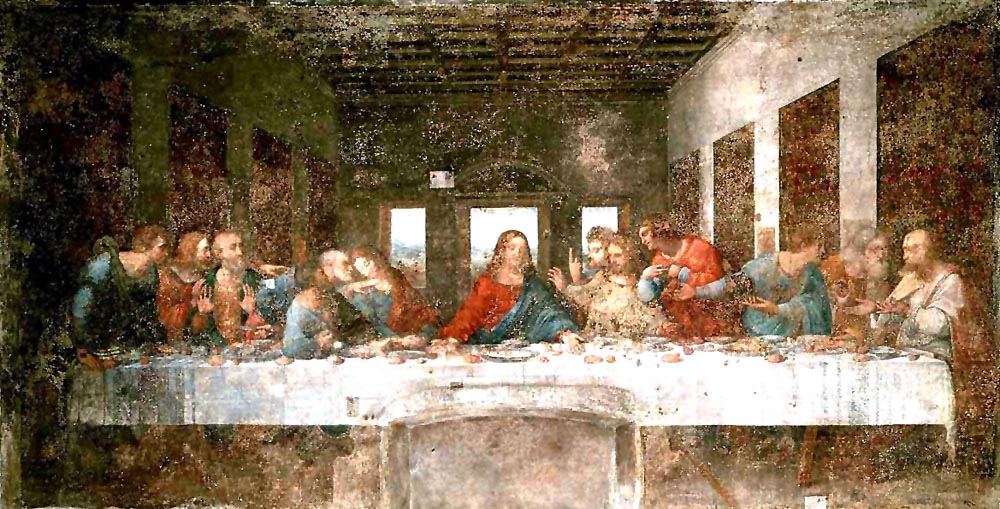|
Giampietrino
Giampietrino, probably Giovanni Pietro Rizzoli (active 1495–1549), was a north Italian painter of the Lombard school and Leonardo's circle, succinctly characterized by S. J. Freedberg as an "exploiter of Leonardo's repertory."Freedberg, 1993:383. Biography Giampietrino was a productive painter of large altarpieces, Madonnas, holy women in half figure, and mythological women. For a long time, the true identity of the artist was unknown; he was only known as a so-called "Giampietrino" whose name appeared in lists of the members of Leonardo's studio. In 1929, Wilhelm Suida suggested that he could perhaps be Giovanni Battista Belmonte, since a Madonna signed with this name and dated 1509 had been associated stylistically with Giampietrino. Since then, this assumption is considered outdated, and Giampietrino is identified predominantly with Giovanni Pietro Rizzoli, who is known through documents. Giampietrino has been regarded as a talented painter who contributed substantiall ... [...More Info...] [...Related Items...] OR: [Wikipedia] [Google] [Baidu] |
Leda And Her Children
''Kneeling Leda with Her Children'' is a 16th-century painting by Leonardo da Vinci's pupil Giampietrino. It is now in the Gemäldegalerie Alte Meister (Kassel). Description It is based on sketches for Leonardo's own ''Leda and the Swan'', now in the collections of Windsor Castle, the Museum Boijmans Van Beuningen, in Rotterdam, and Chatsworth House. The beautiful princess Leda is seduced by Zeus who transformed himself to a magnificent swan. On the same night, Leda would also sleep with her husband, King Tyndareus of Sparta. The result is a pair of twins, the beautiful Helen and the immortal Pollux as children of Zeus, Clytemnestra and the mortal Castor as offspring of Tyndareus. While Giampietrino omitted the swan in the Kassel painting, the eggshells betray the divine liaison. Infrared spectroscopy has revealed two different underdrawings: one underdrawing corresponding with the figure of Leda and her children, and a second one, using the spolvero technique, exactly repe ... [...More Info...] [...Related Items...] OR: [Wikipedia] [Google] [Baidu] |
The Last Supper (da Vinci)
''The Last Supper'' ( it, Il Cenacolo or ) is a mural painting by the Italian High Renaissance artist Leonardo da Vinci, dated to . The painting represents the scene of the Last Supper of Jesus with the Twelve Apostles, as it is told in the Gospel of Johnspecifically the moment after Jesus announces that one of his apostles will betray him. Its handling of space, mastery of perspective, treatment of motion and complex display of human emotion has made it one of the Western world's most recognizable paintings and among Leonardo's most celebrated works. Some commentators consider it pivotal in inaugurating the transition into what is now termed the High Renaissance. The work was commissioned as part of a plan of renovations to the church and its convent buildings by Leonardo's patron Ludovico Sforza, Duke of Milan. In order to permit his inconsistent painting schedule and frequent revisions, it is painted with materials that allowed for regular alterations: tempera on gesso, ... [...More Info...] [...Related Items...] OR: [Wikipedia] [Google] [Baidu] |
Leonardeschi
The Leonardeschi were the large group of artists who worked in the studio of, or under the influence of, Leonardo da Vinci. They were artists of Italian Renaissance painting, although his influence extended to many countries within Europe. As a teenager, Leonardo was enrolled as an apprentice in the studio of Andrea del Verrocchio in Florence by his father, Ser Piero di Antonio di Ser Piero di Ser Guido da Vinci, a wealthy notary. In 1472, Leonardo joined the Guild of St Luke and eventually, he qualified as a master by this important guild. Leonardo left the studio of del Verrocchio in late 1477 as an independent artist, working on commissions. Leonardo continued to live in the same quarters as del Verrocchio, however, and they collaborated on some projects. Leonardo's father enabled him to set up his own studio. In 1482, Leonardo visited Milan where he stayed with Giovanni Ambrogio de Predis, Evangelista de Predis, and their four brothers, all of whom were artists of different ... [...More Info...] [...Related Items...] OR: [Wikipedia] [Google] [Baidu] |
15th-century Italian Painters
The 15th century was the century which spans the Julian dates from 1 January 1401 ( MCDI) to 31 December 1500 ( MD). In Europe, the 15th century includes parts of the Late Middle Ages, the Early Renaissance, and the early modern period. Many technological, social and cultural developments of the 15th century can in retrospect be seen as heralding the " European miracle" of the following centuries. The architectural perspective, and the modern fields which are known today as banking and accounting were founded in Italy. The Hundred Years' War ended with a decisive French victory over the English in the Battle of Castillon. Financial troubles in England following the conflict resulted in the Wars of the Roses, a series of dynastic wars for the throne of England. The conflicts ended with the defeat of Richard III by Henry VII at the Battle of Bosworth Field, establishing the Tudor dynasty in the later part of the century. Constantinople, known as the capital of the world ... [...More Info...] [...Related Items...] OR: [Wikipedia] [Google] [Baidu] |



